Entry Category: Early Twentieth Century
Comer, Robbie Gill
 Compress Loss
Compress Loss
Cotter Expulsion of 1906
Crossett Lynching of 1904
Davis, Anthony (Lynching of)
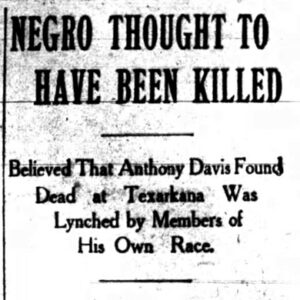 Davis Lynching Article
Davis Lynching Article
Davis, Howard (Lynching of)
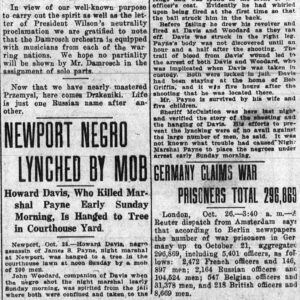 Howard Davis Lynching Article
Howard Davis Lynching Article
Davis, Lovett (Lynching of)
Dean, Arthur (Lynching of)
Dillard (Lynching of)
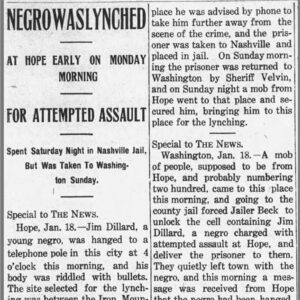 "Jim" Dillard Lynching Article
"Jim" Dillard Lynching Article
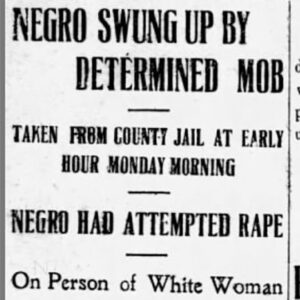 "Tom" Dillard Lynching Article
"Tom" Dillard Lynching Article
Dodd, Frank (Lynching of)
 Dodd Lynching Article
Dodd Lynching Article
Dumas Race Riot of 1920
 Dumas Race Riot of 1920 Article
Dumas Race Riot of 1920 Article
 Dumas Race Riot of 1920 Article
Dumas Race Riot of 1920 Article
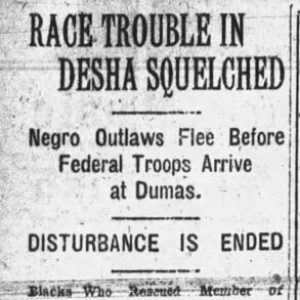 Dumas Race Riot of 1920 Article
Dumas Race Riot of 1920 Article
 Dumas Race Riot of 1920 Article
Dumas Race Riot of 1920 Article
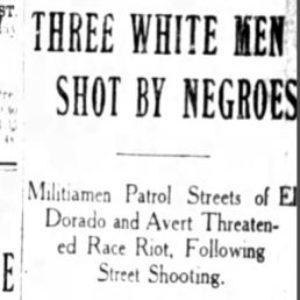 El Dorado Race Riot Article
El Dorado Race Riot Article
El Dorado Race Riot of 1910
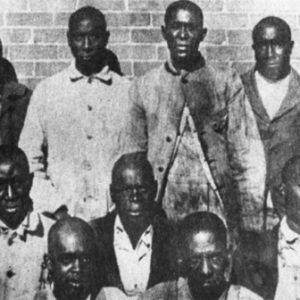 Elaine Massacre Defendants
Elaine Massacre Defendants
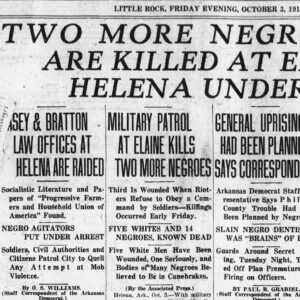 Elaine Massacre Headlines
Elaine Massacre Headlines
Elaine Massacre of 1919
aka: Elaine Race Riot of 1919
aka: Elaine Race Massacre
 Elaine Nurses
Elaine Nurses
Ellison, Clyde (Lynching of)
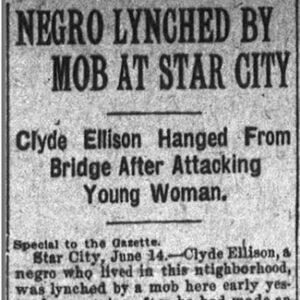 Ellison Lynching Article
Ellison Lynching Article
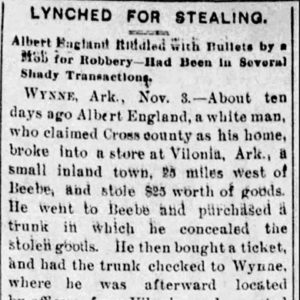 England Lynching Editorial
England Lynching Editorial
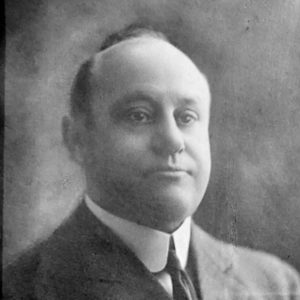 Jacob Fink
Jacob Fink
Fleming, Sam (Lynching of)
Flemming, Owen (Lynching of)
Flowers, Beulah Lee Sampson
Fox, Joseph (Joe)
Fox, Warren (Lynching of)
Franklin, Monroe (Lynching of)
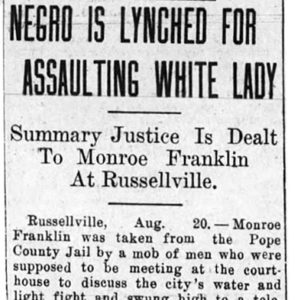 Monroe Franklin Lynching Article
Monroe Franklin Lynching Article
George (Lynching of)
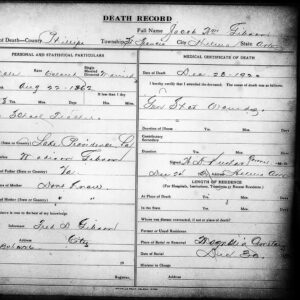 Gibson Death Record
Gibson Death Record
Gibson, J. W. (Murder of)
Gilbert, John (Lynching of)
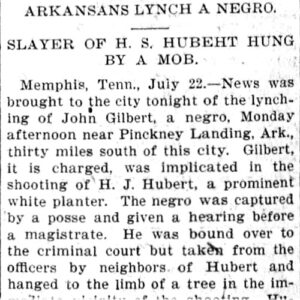 John Gilbert Lynching Story
John Gilbert Lynching Story
Giles, Albert
Gilmore, Felix (Lynching of)
Green, Crane (Lynching of)
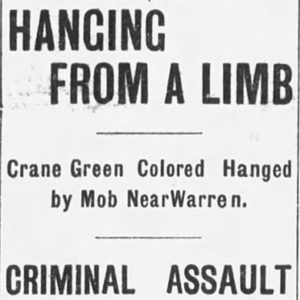 Crane Green Lynching Article
Crane Green Lynching Article
Green, Steve
Haley, Loy (Lynching of)
 Haley Lynching Article
Haley Lynching Article




